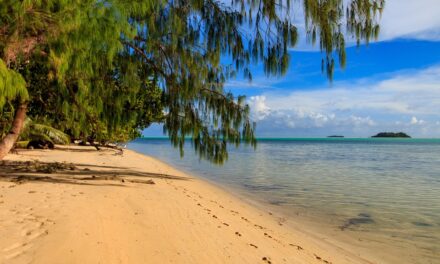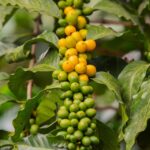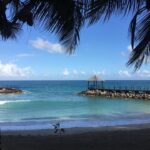Guinea-Bissau, a small yet culturally rich nation located on the West African coast, often gets overshadowed by larger African tourist giants. However, for the intrepid traveller seeking untouched beauty, warm-hearted locals, and authentic experiences, Guinea-Bissau is nothing short of a hidden gem. This guide delves into must-visit destinations, insider tips, and everything you need to know to plan your journey to this enchanting country.
Whether you’re exploring the pristine beaches of the Bijagós Archipelago, marvelling at the colonial-era charm of Bissau, or experiencing the vibrant traditions of local festivals, Guinea-Bissau has something for everyone.
Why Should You Visit Guinea-Bissau?
Guinea-Bissau offers an experience that is both unique and deeply rooted in its history and culture. Imagine walking through unspoiled nature reserves, enjoying fresh seafood by the ocean, and learning about fascinating animist traditions still alive in the modern era.
If you’re tired of overcrowded tourist spots and commercialised travel destinations, Guinea-Bissau provides an authentic experience that feels almost like stepping into a time capsule. Only here can you immerse yourself in a harmonious blend of African traditions, Portuguese colonial heritage, and untouched natural wonders.
Top Must-Visit Destinations in Guinea-Bissau
1. Bissau – The Capital City Full of Character
The nation’s capital, Bissau, is an excellent starting point for your Guinea-Bissau adventure. While it might not be as developed as other capital cities, its charm lies in its rustic appeal and historical significance.
Highlights in Bissau:
- Fortaleza d’Amura: A Portuguese colonial fort and one of the city’s most prominent historical landmarks.
- Bissau Velho: Stroll through the old town’s cobbled streets and admire its distinctive colonial architecture.
- Cultural Immersion: Visit local markets like Bandim Market, where you can interact with locals, taste fresh produce, and buy traditional crafts.
2. Bijagós Archipelago – A Biodiverse Paradise
If island-hopping is your thing, the Bijagós Archipelago is a dream come true. With over 80 islands scattered in the Atlantic Ocean, most of which are uninhabited, it is one of the most stunning and ecologically diverse regions in Africa.
Key Experiences in Bijagós:
- Orango Island: Famous for its saltwater hippos – a rare and fascinating sight in the wild.
- Bubaque Island: The heart of the archipelago with basic accommodations, perfect for a more relaxed vibe. You can also explore its small museum dedicated to Bijagós culture.
- Wildlife Safari: Encounter turtles, rare bird species, and unspoiled mangroves.
- Beaches: Visit secluded beaches that promise tranquillity and breathtaking sunsets.
Nihosi Travels & Tours also offers guided eco-tours through the Bijagós Archipelago, perfect for nature enthusiasts!
3. Cacheu – A Town Steeped in History
Located along the Rio Cacheu, this historical town offers a sombre yet enlightening look into Guinea-Bissau’s colonial and slave trade history.
Attractions in Cacheu:
- Cacheu Fort: A 16th-century fort that serves as a reminder of the town’s role in the transatlantic slave trade.
- Mangrove Nature Park: This protected area is ideal for birdwatching and river cruises.
- Local Village Life: Interact with friendly villagers and learn about their traditional fishing techniques.
4. Cantanhez Forest National Park – For the Nature Buffs
Cantanhez Forest is a haven for biodiversity lovers. Located in the southern part of the country, this pristine region is bursting with lush forests and exotic wildlife.
What to Do in Cantanhez:
- Chimpanzee Tracking: Spot wild chimpanzees in their natural habitats as they swing from tree to tree.
- Boat Rides: Navigate the waterways for breathtaking jungle views.
- Cultural Experiences: Visit the indigenous communities surrounding the park and learn about their coexistence with nature.
5. Bolama – The Former Capital
Before Bissau, Bolama held the title of Guinea-Bissau’s capital. Situated on Bolama Island, this sleepy town exudes colonial charm, featuring remnants of once-grand Portuguese buildings now engulfed by nature.
Highlights:
- Colonial Ruins: Walk through the town for a photogenic tour of faded colonial architecture.
- Quiet Beaches: Enjoy undisturbed moments along the coastline, ideal for travellers seeking solitude.
Insider Secrets for an Unforgettable Trip to Guinea-Bissau
Exploring a destination as off-the-beaten-path as Guinea-Bissau requires a little extra planning. Here are some insider tips to make your journey as smooth as possible:
1. Time Your Visit Around the Carnival
Guinea-Bissau’s Carnival, celebrated every February, is an explosion of music, dance, and colour. It’s one of West Africa’s most vibrant festivals, showcasing the country’s unique blend of African and Portuguese influences.
2. Learn Basic Crioulo Phrases
The majority of locals speak Crioulo, a blend of Portuguese and African languages. While many people speak basic Portuguese, knowing simple phrases like “Bom dia” (Good morning) or “Obriga” (Thank you) will win you friendly smiles.
3. Explore Local Cuisine
Make sure to try some of the local dishes, including:
- Jollof rice: A tantalising rice dish with vegetables and spices, sometimes served with fish or chicken.
- Grilled fish: Prepared fresh from the Atlantic Ocean.
- Caldo de Mancarra: A peanut-based stew, one of the country’s most iconic dishes.
4. Pack for a Tropical Climate
The weather in Guinea-Bissau is tropical, with a wet and dry season. The best time to visit is during the dry season (November-April) when the weather is most pleasant for exploring. Don’t forget essentials like sunscreen, mosquito repellent, and lightweight clothing.
5. Travel Responsibly
Guinea-Bissau’s infrastructure is still developing, so practising responsible tourism can make a big difference. Support local businesses, respect cultural traditions, and leave minimal environmental footprints.
Nihosi Travels & Tours offers sustainable travel options tailored to eco-conscious travellers visiting Guinea-Bissau’s fragile ecosystems.
FAQs About Exploring Guinea-Bissau
1. Is Guinea-Bissau a safe travel destination?
Yes, it is generally safe for tourists, but like any developing country, exercising caution, especially at night or in isolated areas, is advisable.
2. Do I need a visa to enter Guinea-Bissau?
Most nationalities require a visa to enter. Check with your local consulate for up-to-date requirements.
3. What currency is used in Guinea-Bissau?
The official currency is the West African CFA franc (XOF). While credit cards are rarely accepted, cash is king.
4. Are vaccinations required before visiting?
Yes, travellers are recommended to get immunised against yellow fever and ensure their routine vaccines are up to date. Consult your doctor for detailed health advice.
5. What are some popular activities in Guinea-Bissau?
Wildlife safaris, island hopping in the Bijagós, exploring colonial towns, and attending traditional festivals rank high among visitor experiences.
Closing Thoughts
Guinea-Bissau may not yet feature on the radar of mainstream travellers, but therein lies its charm. This unspoiled and culturally rich destination promises discoveries that you won’t find elsewhere—from untouched national parks to vibrant local festivals. By following the tips and destinations outlined in this guide, you’ll be well-equipped to experience Guinea-Bissau in all its glory.
For tailored tours and expert advice, visit Nihosi Travels & Tours, your trusted partner for an unforgettable trip to Guinea-Bissau.
So, are you ready to uncover one of Africa’s best-kept secrets?
Happy travels!












Subscribe To Our Newsletter
Join our mailing list to receive the latest news and updates from our team.
You have Successfully Subscribed!